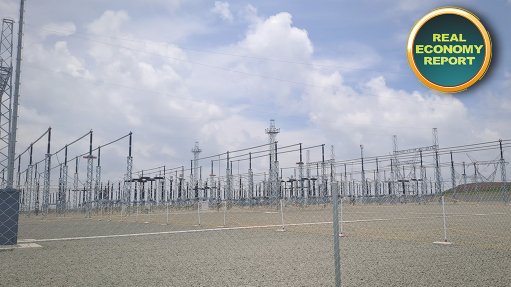Interesting facts about electric fish
I recently visited the Zambezi river, in Zambia. During my time there, dedicated to fly-fishing and drinking milk and flavoured fruit juice, I speculated on the nature of electric fish (no, there are none in the Zambezi).
So, when I returned, I looked up all I could find on electric fish. I found that an electric fish is any fish that can generate electric fields. A fish that can generate electric fields is said to be electrogenic, while a fish that has the ability to detect electric fields is said to be electroreceptive. Electric fish species occur in oceans and in the freshwater rivers of South America and Africa.
Electric fish can kill people. In South America, there is a record of three men and two horses having been killed by electric eels (which are misnamed – actually, they are fish).
The fish use their muscles and nerves to generate electricity and discharge the electricity through the tail. The electricity produced is direct current, like a battery. Up to 600 V can be generated, with a current of up to 1 Amp.
The questions are: Why does a fish not shock itself to death? Are any land animals electrogenic? Could we adapt how they generate electricity to our own use?
The Internet has many answers to the first question, most cut and pasted from Scientific American. The obvious answer, to my mind, is that, if electric fish shocked themselves to death, there would not be any of them around. Silly. But seriously, folks, electric fish probably do not shock themselves to death because the individual cells that make up the voltage have little potential difference between them. Or something. Some fish use electricity for navigation (they send weak pulses of electricity out to locate themselves in very muddy water) and then use larger pulses to stun their prey. It is all about navigation and food.
Are any land animals or birds electrogenic? Not as far as I know. Air is an excellent insulator (this is why we have power lines with uninsulated conductors, relying on air alone for insulation), while the muddy water of the South American and African rivers conduct pretty well. Thus, an electrogenic land animal that relied on stunning its prey would die of starvation.
With regard to whether we could adapt how electric fish generate electricity to our own use – the electric fish only discharges current in 200 millisecond bursts, so, even if we had a whole tank of them in the backyard, we would be hard pressed to get enough current to watch DStv or make toast. Also, finding appliances that run on 600 V dc would be a challenge.
Moving away from electrogenic fish – we have electro- receptive fish. These detect electric fields and respond accordingly, either to avoid the fish emitting the electricity or to try to attack it.
Many people do not realise that there is a technique of fishing known as electrofishing. Using this technique, a high-voltage source is introduced into a stream and any fish that swims into the electric field is deflected by it to swim in a circle around the source until it is netted. This technique has been used by scientists to determine fish populations and to tag fish without too much difficulty.
As far as I can establish, electrofishing works on all fish and I suspect even on fish that are not electroreceptive. It would be an interesting experiment to determine the maximum electric field that the fish could survive and the minimum electric field that would affect the fish. The former would be a difficult study, since the operator of the apparatus would have to be insulated from the water, lest they themselves end up swimming in a circle around the high voltage source. To determine the minimum electric field would be simpler.
But, as I sat in the boat on the Zambezi, I have to say, very little of this was on my mind. I was after Tiger fish. But you know . . . none answered my call.
Article Enquiry
Email Article
Save Article
Feedback
To advertise email advertising@creamermedia.co.za or click here
Comments
Press Office
Announcements
What's On
Subscribe to improve your user experience...
Option 1 (equivalent of R125 a month):
Receive a weekly copy of Creamer Media's Engineering News & Mining Weekly magazine
(print copy for those in South Africa and e-magazine for those outside of South Africa)
Receive daily email newsletters
Access to full search results
Access archive of magazine back copies
Access to Projects in Progress
Access to ONE Research Report of your choice in PDF format
Option 2 (equivalent of R375 a month):
All benefits from Option 1
PLUS
Access to Creamer Media's Research Channel Africa for ALL Research Reports, in PDF format, on various industrial and mining sectors
including Electricity; Water; Energy Transition; Hydrogen; Roads, Rail and Ports; Coal; Gold; Platinum; Battery Metals; etc.
Already a subscriber?
Forgotten your password?
Receive weekly copy of Creamer Media's Engineering News & Mining Weekly magazine (print copy for those in South Africa and e-magazine for those outside of South Africa)
➕
Recieve daily email newsletters
➕
Access to full search results
➕
Access archive of magazine back copies
➕
Access to Projects in Progress
➕
Access to ONE Research Report of your choice in PDF format
RESEARCH CHANNEL AFRICA
R4500 (equivalent of R375 a month)
SUBSCRIBEAll benefits from Option 1
➕
Access to Creamer Media's Research Channel Africa for ALL Research Reports on various industrial and mining sectors, in PDF format, including on:
Electricity
➕
Water
➕
Energy Transition
➕
Hydrogen
➕
Roads, Rail and Ports
➕
Coal
➕
Gold
➕
Platinum
➕
Battery Metals
➕
etc.
Receive all benefits from Option 1 or Option 2 delivered to numerous people at your company
➕
Multiple User names and Passwords for simultaneous log-ins
➕
Intranet integration access to all in your organisation

















